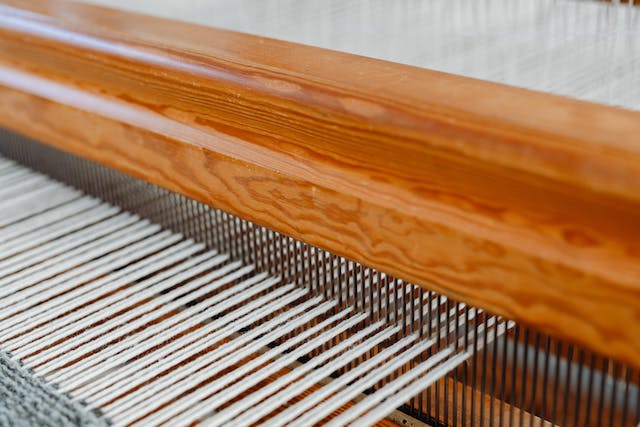The world of fabrication and textile manufacturing has undergone significant transformations in recent years, with technological advancements playing a pivotal role in reshaping traditional processes. One such groundbreaking innovation that has garnered attention is the advent of Direct Warping Machines. These state-of-the-art machines are revolutionizing the way fabrics are produced, offering unparalleled efficiency, precision, and flexibility in the fabrication process.
Understanding Traditional Warping:
Before delving into the innovative realm of direct warping machines, it’s essential to grasp the conventional method of warping. In traditional weaving processes, yarns are wound onto a beam to create a warp that serves as the foundational structure for weaving fabrics. This process involves multiple steps, including leasing, beaming, and drawing-in, making it time-consuming and resource-intensive.

Challenges with Traditional Warping:
While traditional warping methods have been the backbone of the textile industry for centuries, they come with inherent challenges. The complex series of steps involved often result in higher labor costs, increased chances of errors, and longer lead times. As the demand for customized and intricate fabrics grows, the limitations of traditional warping become more pronounced.
Enter Direct Warping Machines:
Direct warping machines represent a paradigm shift in the textile industry. These innovative machines streamline the warping process by eliminating intermediate steps, allowing for a direct and precise transformation of yarn into a warp. The key feature that sets direct warping apart is its ability to bypass the need for a warp beam, resulting in a more efficient and cost-effective process.
Benefits of Direct Warping:
- Increased Efficiency: Direct warping machines significantly reduce the time and labor required for the warping process. By eliminating the need for intermediate steps, these machines enhance overall production efficiency, enabling manufacturers to meet tight deadlines and handle large volumes of orders.
- Precision and Consistency: The direct warping process ensures a higher level of precision and consistency in the creation of warps. This leads to a reduction in defects and variations in the final fabric, meeting the stringent quality standards demanded by today’s market.
- Customization Opportunities: With direct warping, manufacturers can easily adapt to the growing demand for customized and specialty fabrics. The flexibility of these machines allows for quick changes in warp patterns, colors, and designs, empowering textile producers to stay ahead of market trends.
- Cost-Effectiveness: The streamlined nature of direct warping not only reduces labor costs but also minimizes material wastage. This cost-effectiveness makes direct warping machines an attractive investment for textile companies looking to optimize their production processes.
- Adaptability to Various Yarns: Direct warping machines can handle a wide range of yarn types, thicknesses, and materials. This adaptability adds another layer of versatility to the fabrication process, accommodating diverse customer requirements and expanding the scope of textile production.
- Reduced Environmental Impact: The efficiency gains and reduced material wastage associated with direct warping contribute to a more sustainable and environmentally friendly manufacturing process. As the global textile industry grapples with the need for eco-conscious practices, direct warping machines emerge as a step in the right direction.
Challenges and Innovations in Direct Warping:
While direct warping machines offer a host of benefits, they are not without their challenges. Technical complexities, initial investment costs, and the need for skilled operators are some of the hurdles that manufacturers may face when adopting this innovative technology. However, ongoing research and development efforts are focused on addressing these challenges and further refining direct warping machines.
Innovations in automation and artificial intelligence are playing a crucial role in overcoming the learning curve associated with direct warping. Advanced control systems and intuitive interfaces make these machines more accessible to operators, reducing the dependency on specialized skills.
Future Outlook:
As technology continues to evolve, the future of direct warping machines looks promising. Ongoing research and development efforts are focused on enhancing automation, improving user interfaces, and expanding the range of yarns that these machines can handle. The integration of data analytics and machine learning is also expected to further optimize the efficiency of direct warping processes.
In conclusion, direct warping machines represent a transformative force in the world of textile fabrication. Their ability to enhance efficiency, precision, and customization capabilities positions them as a cornerstone of the modern textile industry. As more manufacturers recognize the advantages of this innovative technology, the adoption of direct warping machines is likely to become widespread, reshaping the landscape of fabric production for years to come.







